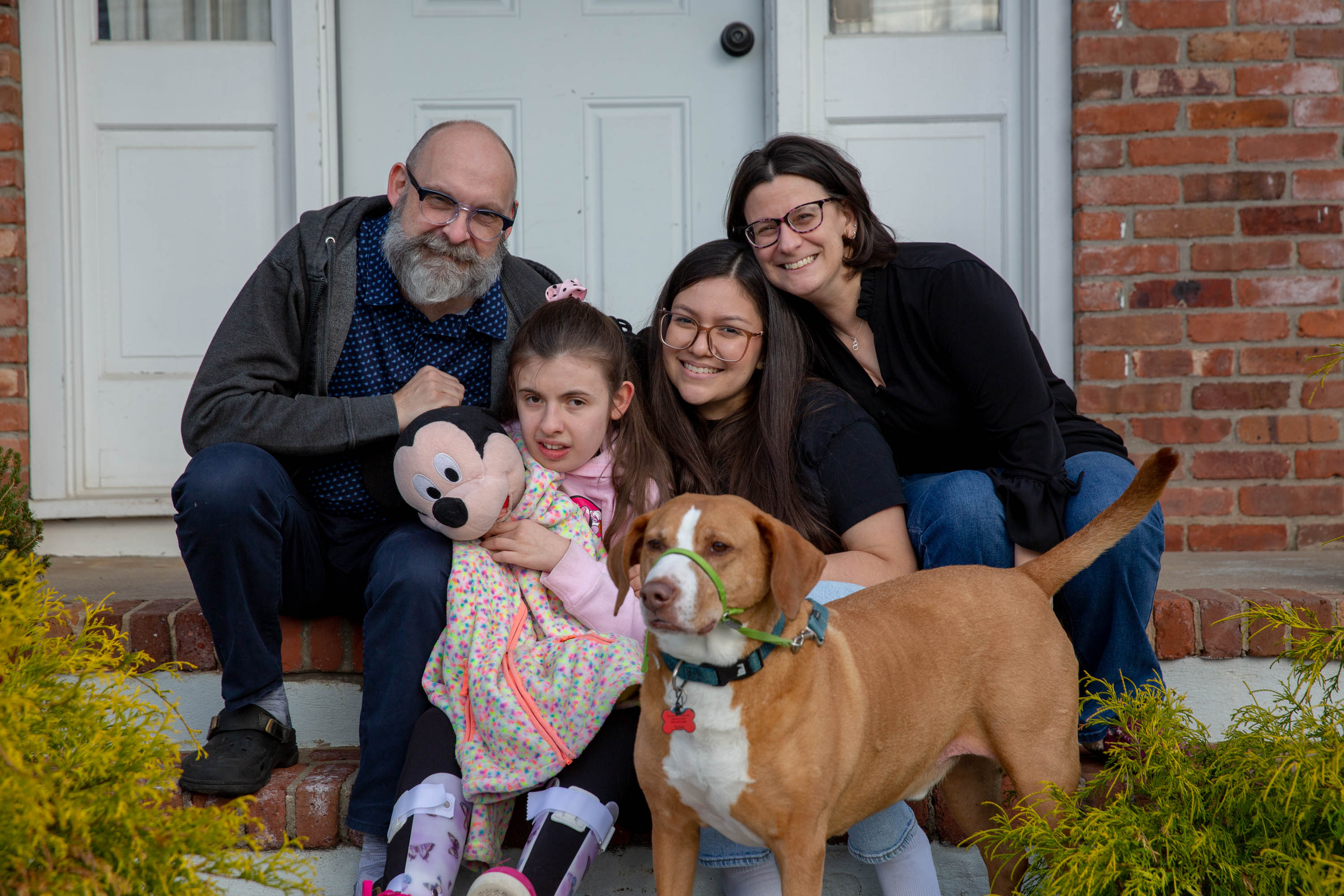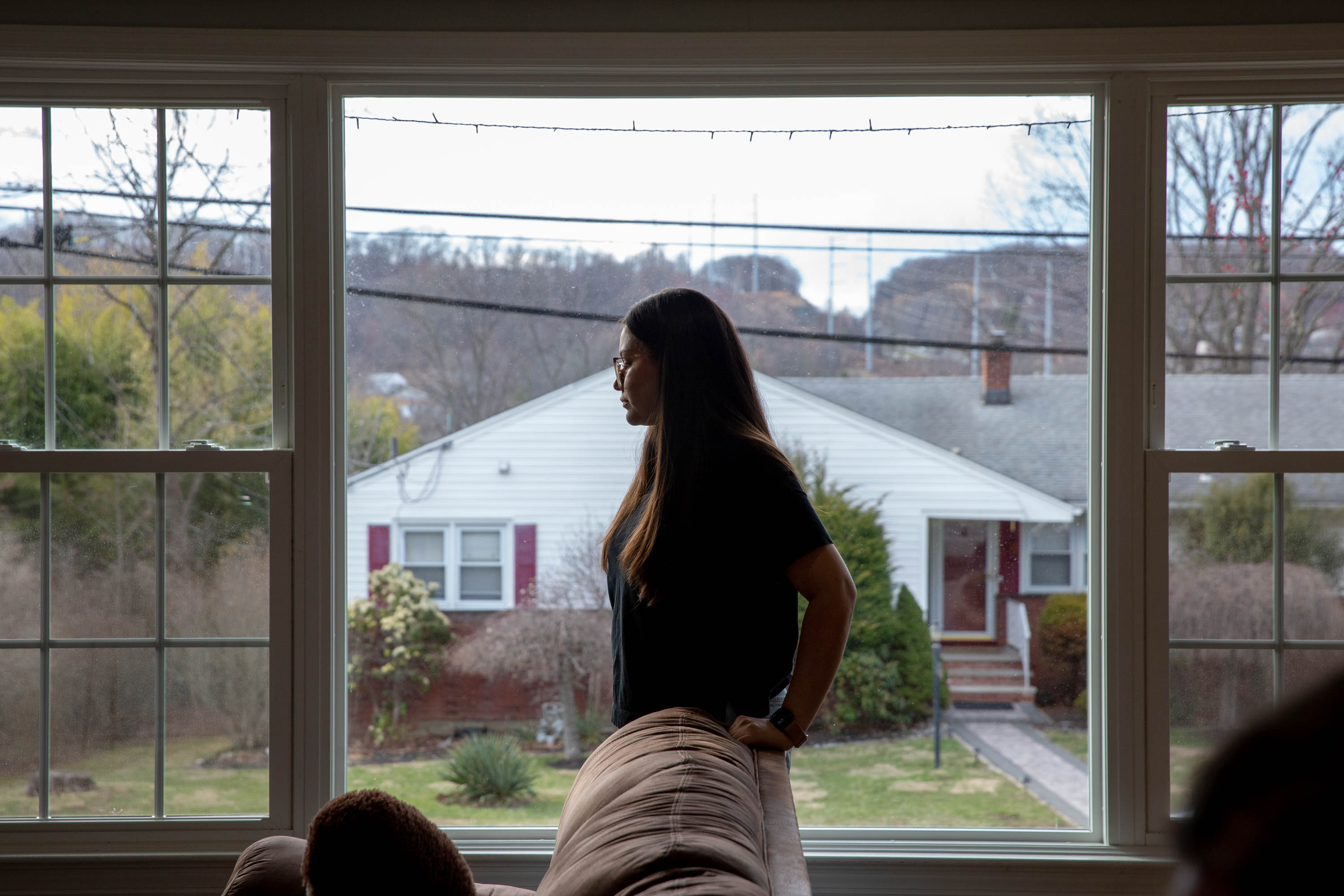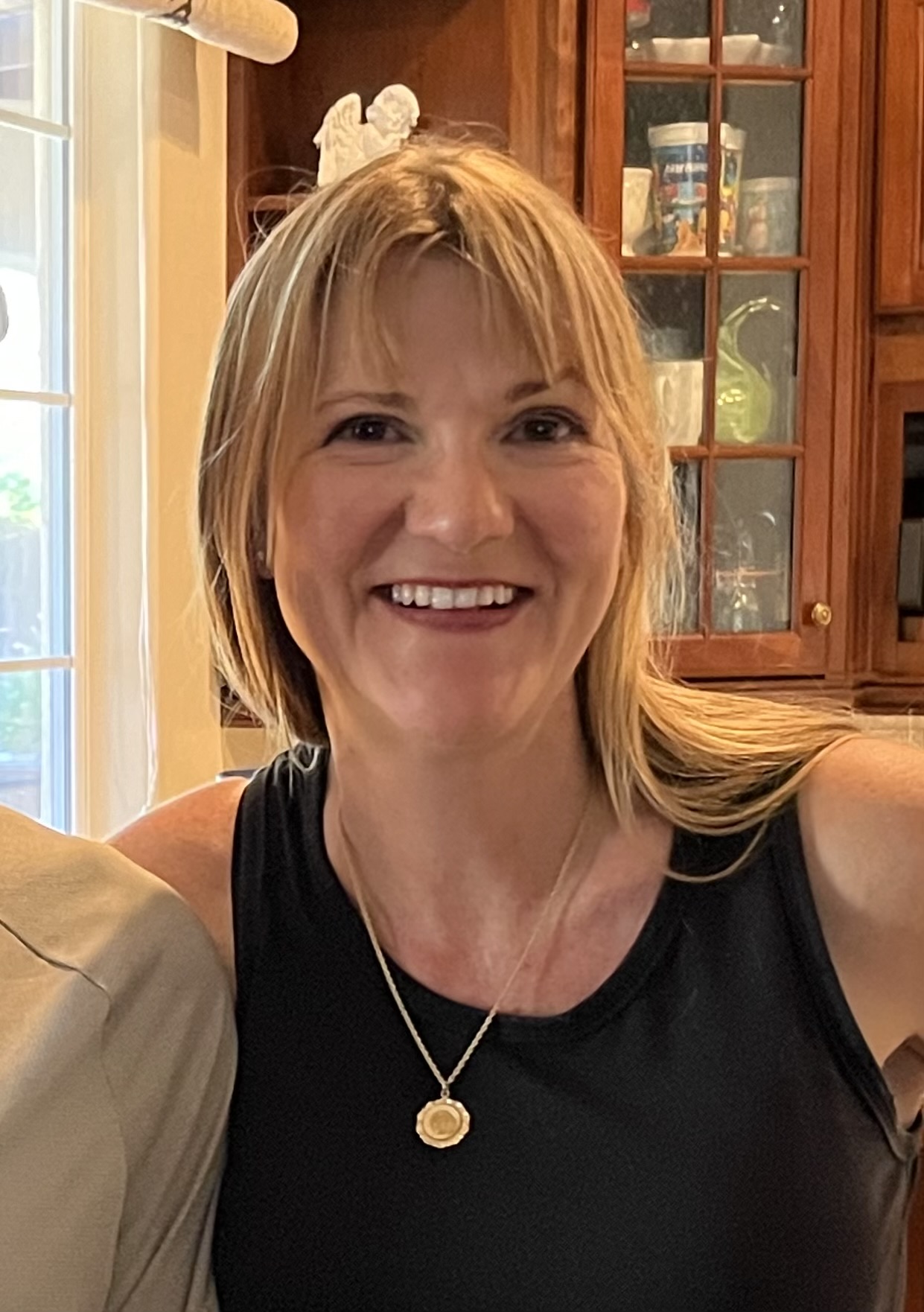Alanys Ortiz reads Josephine Senek’s cues before she speaks. Josephine, who lives with a rare and debilitating genetic condition, fidgets her fingers when she’s tired and bites the air when something hurts.
Josephine, 16, has been diagnosed with tetrasomy 8p mosaicism, severe autism, severe obsessive-compulsive disorder, and attention-deficit/hyperactivity disorder, among other conditions, which will require constant assistance and supervision for the rest of her life.
Ortiz, 25, is Josephine’s caregiver. A Venezuelan immigrant, Ortiz helps Josephine eat, bathe, and perform other daily tasks that the teen cannot do alone at her home in West Orange, New Jersey. Over the past 2½ years, Ortiz said, she has developed an instinct for spotting potential triggers before they escalate. She closes doors and peels barcode stickers off apples to ease Josephine’s anxiety.
But Ortiz’s ability to work in the U.S. has been thrown into doubt by the Trump administration, which ordered an end to the temporary protected status program for some Venezuelans on April 7. On March 31, a federal judge paused the order, giving the administration a week to appeal. If the termination goes through, Ortiz would have to leave the country or risk detention and deportation.
“Our family would be gutted beyond belief,” said Krysta Senek, Josephine’s mother, who has been trying to win a reprieve for Ortiz.
Americans depend on many such foreign-born workers to help care for family members who are older, injured, or disabled and cannot care for themselves. Nearly 6 million people receive personal care in a private home or a group home, and about 2 million people use these services in a nursing home or other long-term care institution, according to a Congressional Budget Office analysis.
Increasingly, the workers who provide that care are immigrants such as Ortiz. The foreign-born share of nursing home workers rose three percentage points from 2007 to 2021, to about 18%, according to an analysis of census data by the Baker Institute for Public Policy at Rice University in Houston.
And foreign-born workers make up a high share of other direct care providers. More than 40% of home health aides, 28% of personal care workers, and 21% of nursing assistants were foreign-born in 2022, compared with 18% of workers overall that year, according to Bureau of Labor Statistics data.
That workforce is in jeopardy amid an immigration crackdown President Donald Trump launched on his first day back in office. He signed executive orders that expanded the use of deportations without a court hearing, suspended refugee resettlements, and more recently ended humanitarian parole programs for nationals of Cuba, Haiti, Nicaragua, and Venezuela.
In invoking the Alien Enemies Act to deport Venezuelans and attempting to revoke legal permanent residency for others, the Trump administration has sparked fear that even those who have followed the nation’s immigration rules could be targeted.
“There's just a general anxiety about what this could all mean, even if somebody is here legally,” said Katie Smith Sloan, president of LeadingAge, a nonprofit representing more than 5,000 nursing homes, assisted living facilities, and other services for aging patients. “There's concern about unfair targeting, unfair activity that could just create trauma, even if they don't ultimately end up being deported, and that's disruptive to a health care environment.”
Shutting down pathways for immigrants to work in the United States, Smith Sloan said, also means many other foreign workers may go instead to countries where they are welcomed and needed.
“We are in competition for the same pool of workers,” she said.




Growing Demand as Labor Pool Likely To Shrink
Demand for caregivers is predicted to surge in the U.S. as the youngest baby boomers reach retirement age, with the need for home health and personal care aides projected to grow about 21% over a decade, according to the Bureau of Labor Statistics. Those 820,000 additional positions represent the most of any occupation. The need for nursing assistants and orderlies also is projected to grow, by about 65,000 positions.
Caregiving is often low-paying and physically demanding work that doesn’t attract enough native-born Americans. The median pay ranges from about $34,000 to $38,000 a year, according to the Bureau of Labor Statistics.
Nursing homes, assisted living facilities, and home health agencies have long struggled with high turnover rates and staffing shortages, Smith Sloan said, and they now fear that Trump’s immigration policies will choke off a key source of workers, leaving many older and disabled Americans without someone to help them eat, dress, and perform daily activities.
With the Trump administration reorganizing the Administration for Community Living, which runs programs supporting older adults and people with disabilities, and Congress considering deep cuts to Medicaid, the largest payer for long-term care in the nation, the president’s anti-immigration policies are creating “a perfect storm” for a sector that has not recovered from the covid-19 pandemic, said Leslie Frane, an executive vice president of the Service Employees International Union, which represents nursing facility workers and home health aides.
The relationships caregivers build with their clients can take years to develop, Frane said, and replacements are already hard to find.
In September, LeadingAge called for the federal government to help the industry meet staffing needs by raising caps on work-related immigration visas, expanding refugee status to more people, and allowing immigrants to test for professional licenses in their native language, among other recommendations.
But, Smith Sloan said, “There's not a lot of appetite for our message right now.”
The White House did not respond to questions about how the administration would address the need for workers in long-term care. Spokesperson Kush Desai said the president was given “a resounding mandate from the American people to enforce our immigration laws and put Americans first” while building on the “progress made during the first Trump presidency to bolster our healthcare workforce and increase healthcare affordability.”
Refugees Fill Nursing Home Jobs in Wisconsin
Until Trump suspended the refugee resettlement program, some nursing homes in Wisconsin had partnered with local churches and job placement programs to hire foreign-born workers, said Robin Wolzenburg, a senior vice president for LeadingAge Wisconsin.
Many work in food service and housekeeping, roles that free up nurses and nursing assistants to work directly with patients. Wolzenburg said many immigrants are interested in direct care roles but take on ancillary roles because they cannot speak English fluently or lack U.S. certification.
Through a partnership with the Wisconsin health department and local schools, Wolzenburg said, nursing homes have begun to offer training in English, Spanish, and Hmong for immigrant workers to become direct care professionals. Wolzenburg said the group planned to roll out training in Swahili soon for Congolese women in the state.
Over the past 2½ years, she said, the partnership helped Wisconsin nursing homes fill more than two dozen jobs. Because refugee admissions are suspended, Wolzenburg said, resettlement agencies aren’t taking on new candidates and have paused job placements to nursing homes.
Many older and disabled immigrants who are permanent residents rely on foreign-born caregivers who speak their native language and know their customs. Frane with the SEIU noted that many members of San Francisco’s large Chinese American community want their aging parents to be cared for at home, preferably by someone who can speak the language.
“In California alone, we have members who speak 12 different languages,” Frane said. “That skill translates into a kind of care and connection with consumers that will be very difficult to replicate if the supply of immigrant caregivers is diminished.”
The Ecosystem a Caregiver Supports
Caregiving is the kind of work that makes other work possible, Frane said. Without outside caregivers, the lives of the patient and their loved ones become more difficult logistically and economically.
“Think of it like pulling out a Jenga stick from a Jenga pile, and the thing starts to topple,” she said.
Thanks to the one-on-one care from Ortiz, Josephine has learned to communicate when she’s hungry or needs help. She now picks up her clothes and is learning to do her own hair. With her anxiety more under control, the violent meltdowns that once marked her weeks have become far less frequent, Ortiz said.
“We live in Josephine’s world,” Ortiz said in Spanish. “I try to help her find her voice and communicate her feelings.”


Ortiz moved to New Jersey from Venezuela in 2022 as part of an au pair program that connects foreign-born workers with people who are older or children with disabilities who need a caregiver at home. Fearing political unrest and crime in her home country, she got temporary protected status when her visa expired last year to keep her authorization to work in the United States and stay with Josephine.
Losing Ortiz would upend Josephine’s progress, Senek said. The teen would lose not only a caregiver, but also a sister and her best friend. The emotional impact would be devastating.
“You have no way to explain to her, ‘Oh, Alanys is being kicked out of the country, and she can't come back,’” she said.
It’s not just Josephine: Senek and her husband depend on Ortiz so they can work full-time jobs and take care of themselves and their marriage. “She's not just an au pair,” Senek said.
The family has called its congressional representatives for help. Even a relative who voted for Trump sent a letter to the president asking him to reconsider his decision.

In the March 31 court decision, U.S. District Judge Edward Chen wrote that canceling the protection could “inflict irreparable harm on hundreds of thousands of persons whose lives, families, and livelihoods will be severely disrupted.”
‘Doing the Work That Their Own People Don’t Want To Do’
News of immigration dragnets that sweep up lawfully present immigrants and mass deportations are causing a lot of stress, even for those who have followed the rules, said Nelly Prieto, 62, who cares for an 88-year-old man with Alzheimer’s disease and a man in his 30s with Down syndrome in Yakima County, Washington.

Born in Mexico, she immigrated to the United States at age 12 and became a U.S. citizen under a law authorized by President Ronald Reagan that made any immigrant who entered the country before 1982 eligible for amnesty. So, she’s not worried for herself. But, she said, some of her co-workers working under H-2B visas are very afraid.
“It kills me to see them when they talk to me about things like that, the fear in their faces,” she said. “They even have letters, notarized letters, ready in case something like that happens, saying where their kids can go.”
Foreign-born home health workers feel they are contributing a valuable service to American society by caring for its most vulnerable, Prieto said. But their efforts are overshadowed by rhetoric and policies that make immigrants feel as if they don’t belong.
“If they cannot appreciate our work, if they cannot appreciate us taking care of their own parents, their own grandparents, their own children, then what else do they want?” she said. “We’re only doing the work that their own people don’t want to do.”
In New Jersey, Ortiz said life has not been the same since she received the news that her TPS authorization was slated to end soon. When she walks outside, she fears that immigration agents will detain her just because she’s from Venezuela.

She’s become extra cautious, always carrying proof that she’s authorized to work and live in the U.S.
Ortiz worries that she’ll end up in a detention center. But even if the U.S. now feels less welcoming, she said, going back to Venezuela is not a safe option.
“I might not mean anything to someone who supports deportations,” Ortiz said. “I know I'm important to three people who need me."
This article was produced by KFF Health News, which publishes California Healthline, an editorially independent service of the California Health Care Foundation.
KFF Health News is a national newsroom that produces in-depth journalism about health issues and is one of the core operating programs at KFF—an independent source of health policy research, polling, and journalism. Learn more about KFF.
USE OUR CONTENT
This story can be republished for free (details).
from Health Industry Archives - KFF Health News















